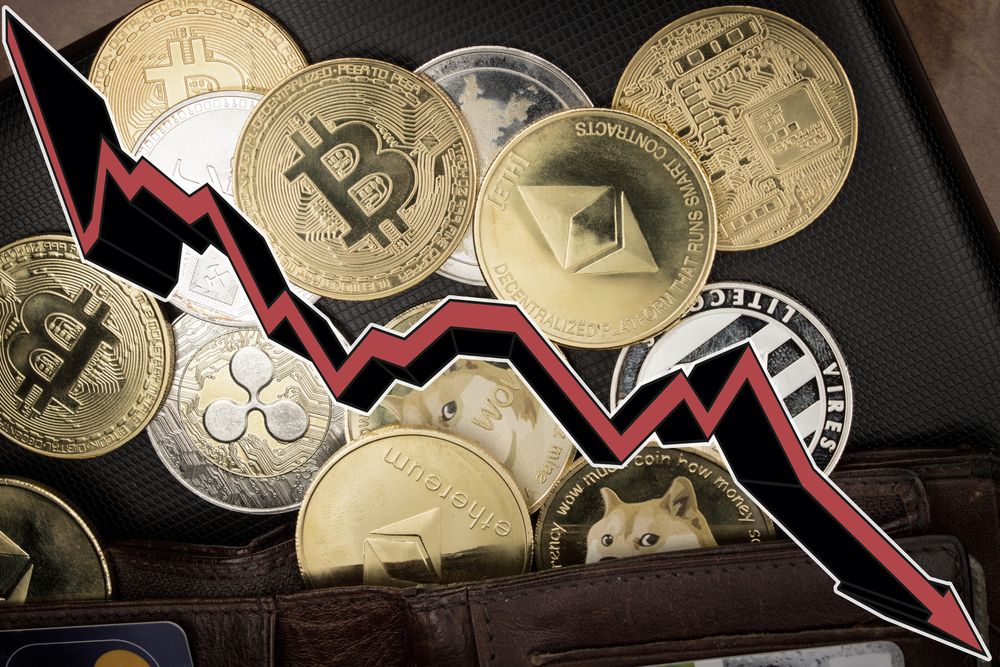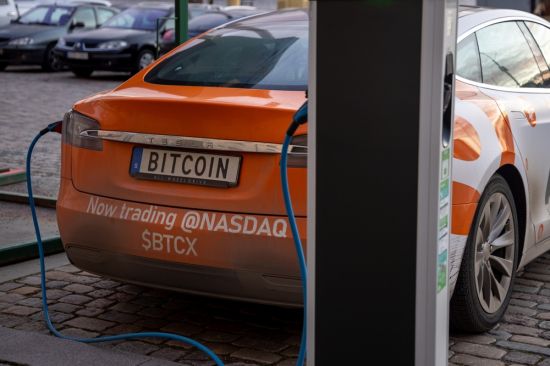Are cryptocurrencies done? Malcolm Wright of InnoFi Advisory argues that the crypto crash of the first half of 2022 had more to do with macroeconomic factors and market moves – and failures – by key players. These developments, he predicts, are sure to lead to greater regulation and more innovation in the industry.
Credit: Igor Faun / Shutterstock.com
The first half of 2022 has been brutal for the cryptocurrency market. Crypto asset prices are down 70 percent to 90 percent, which has led to a significant fall in the total crypto market capitalization from an all-time high of US$3 trillion in November to about US$875 million in June, according to data from CoinGecko. While there has been a slight upward movement in crypto prices recently, the broad crypto market is largely stalled. There is also a real possibility that prices will fall even further before they see any sustained recovery.
This plunge in crypto prices came after the eye-watering rally that lasted under two years and added more than US$2.8 trillion to the market. After such a rally, a drawdown would have been expected. Indeed, this is not crypto's first bear market. Macroeconomic conditions such as surging inflation, a shaky stock market, rising interest rates, recession fears, and the Russia-Ukraine war have also played an integral role in this fall in crypto prices.
During this downturn, automotive and clean energy company Tesla, whose founder and CEO is magnate Elon Musk, sold 75 percent, or US$936 million worth, of its Bitcoin holdings, according to the company’s quarterly report. The aim was to free up cash in the face of a tighter liquidity position as Covid-19 lockdowns continued in China, Tesla still holds US$222 million worth of "digital assets" on its balance sheet.
While several factors, namely macroeconomics and Musk, played a part in the crypto crash, what exacerbated this move was the blow-up of crypto funds and lenders. In May, crypto markets went into freefall when stablecoin (a cryptocurrency designed to have a stable price due to pegging to a commodity or currency or having its supply limited) TerraUSD (UST) de-pegged from the dollar, resulting in its associated cryptocurrency Luna's crash.
What happened was that 3AC made several large directional trades in Grayscale Bitcoin Trust (GBTC), Luna Classic (LUNC) and Staked Ether (stETH), and on top of that, borrowed funds from over 20 prominent institutions. Thus, 3AC was highly vulnerable to the May crypto crash, and as expected, it led to a series of spiral investment collapses for the hedge fund. As the firm went bust, the loan defaults led to mass contagion in crypto.
It was the series of liquidations for 3AC that had a catastrophic impact on crypto lenders such as BlockFi, Voyager and Celsius. Centralized crypto lender Celsius filed for bankruptcy protection after it failed to keep enough liquidity to honor customer redemptions.
In the aftermath, the US Securities and Exchange Commission (SEC) is now taking enforcement action against crypto companies and considering new rules. The US Treasury Department is calling on Congress to devise regulations for the stablecoin ecosystem. "Uneven regulation, supervision, and compliance across jurisdictions creates opportunities for arbitrage and raises risks to financial stability and the protection of consumers, investors, businesses, and markets," the Treasury said in a statement. The Financial Stability Board (FSB), a group of regulators from the G20 nations, is also planning to establish "strong" worldwide standards for crypto.
Because of the enormous attention and media coverage that crypto attracted, 2021 was a breakthrough year for the industry. And while the failure of a handful of companies had far-reaching effects, which showed that the so-called "smart money" was not so smart after all, there has been a blessing in disguise even in this debacle.
The domino effect of the Terra crash and 3AC and Celsius bankruptcy has given federal regulators more ammunition to push for crypto regulation. The crypto space lacks clarity. Lawmakers not only in Washington but across the world are having discussions over how to establish laws and guidelines to safeguard crypto investors and prevent cybercriminals from using digital assets for illicit activities. US officials are showing particular interest in stablecoin regulation.
Clear regulation means the removal of a significant roadblock for the industry, particularly in the US, where investors and firms are operating without clear guidelines. Industry experts see this as a good thing for crypto as more regulation could mean more stability in a volatile market. Sensible regulation that strikes the right balance also has the potential to protect long-term investors, prevent fraudsters from abusing the crypto ecosystem for illicit activities, and provide clear guidance to allow companies to innovate in the crypto economy.
On the adoption front, mainstream companies across multiple industries such as PayPal, AMC, Square, Barclays, Schroders and Tesla, to name a few, have already started coming in. This inflow of bigger, global corporations can propel adoption even further. Increased institutional adoption could bring more options for everyday users. The more "real world" uses it has, the more likely demand for and the value of crypto will increase.
During this recent crypto carnage, DeFi – decentralized finance, or financial applications built on blockchain – was largely unaffected. The 3AC lending crisis highlighted the resilience of the DeFi ecosystem. When Celsius suffered from lending losses and was margin called, they rushed to pay their Compound and MakerDAO loans first in fear of on-chain automated liquidations visible to everyone. DeFi is fully transparent; if you default on the blockchain, it will be clear to all.
The decentralized finance sector mostly continued working as intended. DeFi, however, is still relatively in its infancy, much like the early "Wild West" days of the Internet. So bumps will be expected along the way while prominent DeFi protocols (or “applications”, to use conventional terminology) like Aave and Maker focus on building and innovation.
The unregulated world of DeFi indeed involves high risk, but at the same time, it promises high rewards. But of course, as DeFi starts gaining mainstream adoption, there is a need for better products, good code and more security.
While it may be difficult to predict where things will be in the long term, we can see more institutional adoption and regulation of the sector in the coming months. But the point remains that the cryptocurrency industry is only in its infancy and constantly evolving.
This was not the first time the market suffered such a severe drawdown in prices, and it will not be the last. But given that crypto is a highly volatile asset class, it is wise only to invest what you are prepared to lose. Suitability testing for investors and traders, as opposed to blanket bans for retail users as proposed by some regulators, is the most suitable mechanism to ensure that not only crypto, but also related ecosystems such as GameFi, NFTs and even technology development in traditional banking continue to innovate.
So, crypto is not dead. But the market will not bottom until a change in US Federal Reserve Bank policy is announced. Other regulators will follow. Meanwhile, investors will likely use this time to do their own research to purchase crypto assets in preparation for the next cycle.
New highs will come, just like they did the last three times there were crashes. But this time, we may see the industry and investments lead with responsible innovation to build a more fair and equitable future.
Further reading:
Check out here for more research and analysis from Asian perspectives.

